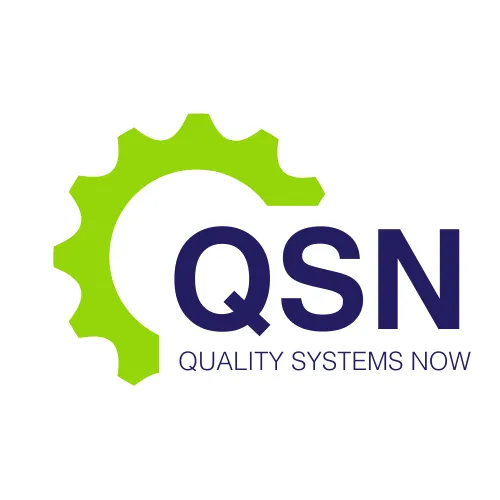NEWS

Understand What Is the Risk Management Plan (RMP) and Risk Management File (RMF)
Whether you are developing a medicine, medical device, or diagnostic technology, regulators such as the TGA, FDA, and EMA require clear and systematic evidence that risks are identified, evaluated, and controlled throughout the product lifecycle.
Two core documents form the backbone of this process: the Risk Management Plan (RMP) and the Risk Management File (RMF). Although closely related, they serve different but complementary purposes. Understanding how these fit into your broader quality and regulatory system is essential for achieving and maintaining compliance.
At Quality Systems Now, we help organisations implement robust risk management frameworks aligned with international standards such as ISO 14971:2019 for medical devices and the ICH Q9 (Quality Risk Management) guideline for medicines. This article explains the purpose, structure, and regulatory expectations for the RMP and RMF—and how startups and manufacturers can build them effectively from the start.
Why Risk Management Matters in Regulated Industries
Regulatory authorities view risk management as a proactive process of identifying potential hazards that could affect product safety, efficacy, or quality, and then controlling those risks through design, manufacturing, and monitoring activities.
In practice, this means manufacturers must demonstrate a systematic approach to risk—one that is documented, traceable, and integrated into every stage of product development and production.
For medicines, risk management frameworks focus on balancing therapeutic benefits with potential safety risks in the target patient population. For medical devices, risk management ensures that the design and use of the product remain safe and effective under foreseeable conditions.
The key principle is continuous risk review. Regulators expect that your understanding of risk evolves as more information becomes available—from design testing through to real-world post-market performance.
What Is a Risk Management Plan (RMP)?
The Risk Management Plan (RMP) is a structured document that describes how risks related to a specific product are identified, assessed, mitigated, and monitored throughout its lifecycle. It outlines the overall strategy for managing product risks and ensuring ongoing patient safety.
Purpose of the RMP
The RMP’s primary purpose is to demonstrate to regulators that you understand the known and potential risks associated with your product, and that you have established measures to minimise and monitor these risks. For therapeutic goods, this includes both clinical and manufacturing-related risks.
For pharmaceuticals, RMPs are often mandated as part of market authorisation applications, especially for high-risk or innovative products. The European Medicines Agency and the TGA, for example, require RMPs for new medicines, biologics, and biosimilars. These documents are reviewed and approved as part of the registration process.
For medical devices, the RMP aligns with ISO 14971 and forms part of the design and development documentation submitted during conformity assessment. It provides the rationale behind design choices, control measures, and post-market surveillance strategies.
Typical Contents of an RMP
An effective RMP usually includes:
Product Overview – Description of the product, intended use, and target population.
Identified Risks – Known safety concerns from pre-clinical, clinical, or design data.
Potential Risks – Risks that could emerge from foreseeable misuse, interactions, or long-term use.
Risk Minimisation Measures – Controls such as design modifications, warnings, or monitoring programs.
Safety Specification – Summary of the safety profile and residual risks.
Pharmacovigilance or Post-Market Plan – Activities for ongoing monitoring and reporting.
Periodic Review – Mechanisms for updating the RMP as new information becomes available.
Key Regulatory Expectations
Regulators expect that the RMP is:
Evidence-based – Derived from systematic analysis of available data.
Comprehensive – Covers all foreseeable hazards, including those related to manufacturing, user error, and device interactions.
Dynamic – Updated as new safety data or usage information arises.
Integrated – Linked to quality management and post-market surveillance systems.
The RMP is not a static compliance document—it is a living part of your regulatory strategy, reflecting your ongoing responsibility for product safety.
What Is a Risk Management File (RMF)?
The Risk Management File (RMF) is the complete, documented record of your product’s risk management activities. It serves as the tangible evidence that your risk management process—defined in your RMP—has been followed and maintained throughout the product lifecycle.
Purpose of the RMF
The RMF demonstrates compliance with standards such as ISO 14971 and the expectations of regulatory authorities. It provides auditors and inspectors with traceable documentation showing that identified risks have been properly analysed, controlled, and reviewed.
Where the RMP describes how you will manage risk, the RMF demonstrates what you have done to achieve it. Together, they form a complete risk management framework.
Typical Contents of an RMF
The RMF typically includes:
Risk Management Plan (RMP) – The governing document that outlines the approach.
Hazard Identification Records – Lists of potential hazards associated with the product or its use.
Risk Analysis Reports – Assessment of severity, probability, and risk acceptability.
Risk Control Measures – Actions taken to eliminate or mitigate identified risks.
Verification of Effectiveness – Evidence showing that risk controls are effective and validated.
Residual Risk Evaluation – Justification for any remaining risk after controls.
Risk/Benefit Assessment – Analysis demonstrating that the product’s benefits outweigh residual risks.
Review and Approval Records – Documentation of management and regulatory review.
Post-Market Surveillance Data – Reports and updates on real-world performance and incidents.
In essence, the RMF is a detailed, auditable history of how your organisation applied risk management principles from concept through to ongoing operation.
How the RMP and RMF Work Together
Although distinct, the RMP and RMF operate as two halves of the same process:
The RMP defines your strategy for managing risk.
The RMF captures the evidence that the strategy has been implemented and maintained.
For example, if your RMP states that all critical design features will undergo formal failure mode and effects analysis (FMEA), your RMF should contain the completed FMEA results, associated design control actions, and verification outcomes.
This integration is vital during inspections. Regulators and auditors will compare your RMF against your RMP to confirm that your documented plan has been executed correctly and remains current. Any inconsistencies can trigger nonconformances or delay approvals.
Common Pitfalls and How to Avoid Them
Even experienced manufacturers can stumble when implementing risk management systems. The most common issues include:
Treating risk management as a one-time task – Regulators expect ongoing monitoring and periodic review, not a static document created at product launch.
Inadequate linkage between design controls and risk controls – Design verification and validation activities must be traceable to identified risks.
Poor documentation of decision-making – Every mitigation decision should be justified and traceable; undocumented assumptions can undermine credibility.
Incomplete post-market feedback loops – Post-market data must feed back into the RMF and trigger updates to the RMP when necessary.
Lack of management oversight – Senior management must review and approve the risk management process; this demonstrates organisational accountability.
Establishing a disciplined, documented risk management process early in development avoids costly remediation later when regulators or auditors request historical evidence.
Building a Compliant Risk Management Framework
A mature risk management framework is not just a set of documents—it is an operational system integrated across your entire quality management structure.
At Quality Systems Now, we assist clients in designing and maintaining compliant risk management systems that align with international standards and TGA, FDA, and ISO expectations. Our support includes:
Developing compliant RMP and RMF templates tailored to your product class
Conducting structured risk workshops and FMEA analysis
Integrating risk management with design control, validation, and change control systems
Training teams on ISO 14971 and ICH Q9 implementation
Reviewing and updating risk files before audits or submissions
Our approach ensures that your documentation is not only compliant but also scientifically defensible and practical for real-world application.
Conclusion
The Risk Management Plan (RMP) and Risk Management File (RMF) are two of the most critical components in demonstrating product safety and regulatory compliance. The RMP defines your strategy for identifying, controlling, and monitoring risk, while the RMF provides the documentary evidence that your plan has been implemented and maintained throughout the product lifecycle.
For startups and established manufacturers alike, mastering these elements is key to building regulator confidence, accelerating approvals, and protecting patient safety.
Quality Systems Now provides expert guidance to help you design, implement, and maintain robust risk management systems—ensuring your products meet the highest standards of compliance and quality from concept to market and beyond.
